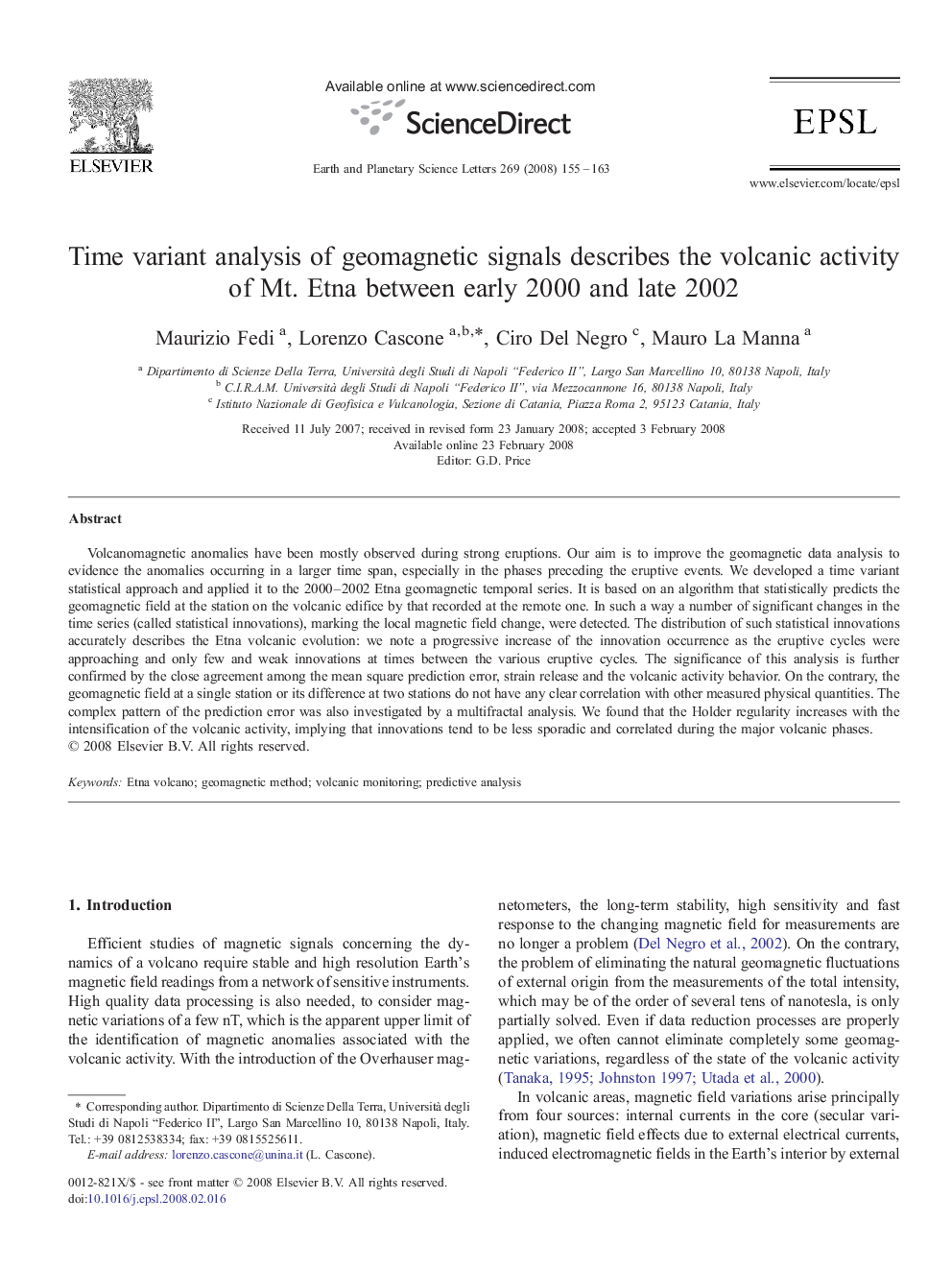| Article ID | Journal | Published Year | Pages | File Type |
|---|---|---|---|---|
| 4679929 | Earth and Planetary Science Letters | 2008 | 9 Pages |
Volcanomagnetic anomalies have been mostly observed during strong eruptions. Our aim is to improve the geomagnetic data analysis to evidence the anomalies occurring in a larger time span, especially in the phases preceding the eruptive events. We developed a time variant statistical approach and applied it to the 2000–2002 Etna geomagnetic temporal series. It is based on an algorithm that statistically predicts the geomagnetic field at the station on the volcanic edifice by that recorded at the remote one. In such a way a number of significant changes in the time series (called statistical innovations), marking the local magnetic field change, were detected. The distribution of such statistical innovations accurately describes the Etna volcanic evolution: we note a progressive increase of the innovation occurrence as the eruptive cycles were approaching and only few and weak innovations at times between the various eruptive cycles. The significance of this analysis is further confirmed by the close agreement among the mean square prediction error, strain release and the volcanic activity behavior. On the contrary, the geomagnetic field at a single station or its difference at two stations do not have any clear correlation with other measured physical quantities. The complex pattern of the prediction error was also investigated by a multifractal analysis. We found that the Holder regularity increases with the intensification of the volcanic activity, implying that innovations tend to be less sporadic and correlated during the major volcanic phases.
